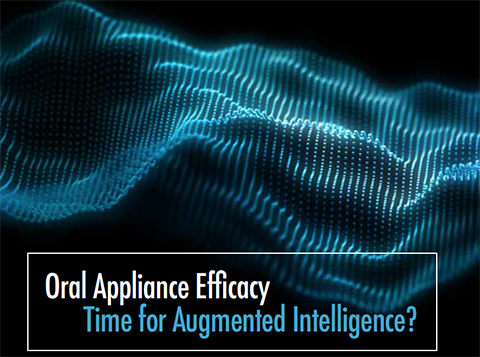
Pankaj Singh, DDS, MD, does not mince words when assessing the knowledge levels of his dental colleagues. Even dentists who know the scope of oral appliance therapy often practice “with guesswork,” he says. Even more troubling, most of those in the traditional restorative realm “don’t know anything” about sleep apnea.
As a private practice dentist in New York City, Dr. Singh has felt the frustration brought on by a lack of objective data. The thirst for a better way led Dr. Singh to co-found APP-NEA, LLC, a company dedicated to improving the practice of Dental Sleep Medicine and Oral Appliance Therapy using “deep machine learning and augmented intelligence” to develop predictive computational algorithms, new digital software and hardware technologies, and workflow processes that allow dentists to treat patients with obstructive sleep apnea more effectively, efficiently and predictably.
“There is no such thing as predictive analytics and algorithms in dentistry,” says the 53-year-old Dr. Singh, who also serves as an attending in the Department of Otolaryngology and Oral & Maxillofacial Surgery, Lenox Hill Hospital, New York. “There are a lot more analytics used in medicine as compared to dentistry. Analytics are used on a daily basis across the entire industry of finance. In finance, they don’t make major decisions based on guess work.”
Machine learning and artificial intelligence are actually making the financial trades. Dr. Singh points to a simple reason: Machines can analyze meta data from all kinds of news sources, as soon as it is made public and comes across digital channels. Machines are scanning these sources in real time, scouring digital platforms for certain key words. The analysis happens on a larger scale— faster and better than humans can.
“We can only base our clinical judgment on the knowledge we have,” Singh muses. “Imagine if you take 200+ years of collective, sum total of knowledge across multiple doctors, clinicians and scientists and compile all that data and analyze it, and then figure out that you can actually not only create this data base of answers to the questions, but also which of the clinical, phenotypical, pre-test diagnostic and radiologic data-points are relevant and of what value, in being able to prospectively predict optimal treatment plan and treatment efficacy. A doctor can ask a question, and get an answer. That’s what our system does. It literally guides dentists into an exact dynamic workflow for optimal treatment plan for most effective treatment using oral appliances.”
Too often, the consequences of what is guesswork for developing the initial bite are less than ideal results right from the start. “And patients have to keep going back and forth to the dentist, or worse, left to themselves to adjust the appliance, or the appliance doesn’t fit because they didn’t take the bite correctly,” Singh says
When the patient doesn’t feel the benefit of the therapy, who do you think they’ll voice their upset. Patients will call their referring physician and say, “Oral Appliances don’t work”, “How could you refer me to someone like that? I want something else.” They aren’t realizing that dentists are not practicing based on objective data, and instead completely doing it subjectively, by guesswork and trial and error.”
Factor in that the subject of sleep apnea and the dentists role in it’s treatment is not taught well, or at all, in dental school or in residency, and it adds up to a familiar theme: Dentists need help. Education for the dentists and their teams, and on the software side, there are limited offerings that cater to dental sleep medicine, even fewer that also include medical billing. “EMR and practice management softwares (PMS) are nothing more than a data warehouse,” Singh says. “There is no automated and guided workflow, no analytics built in there. Other PMS software don’t guide the doctor, into the most appropriate patient specific course of therapy for most predictive treatment outcome.”
According to Singh, APP-NEA, LLC is aligned with practice parameters set by the American Academy of Sleep Medicine and the American Academy of Dental Sleep Medicine. It’s done ethically without “pushing oral appliances” when not indicated. MAD-FIT’s analytics actually exclude certain oral appliances if the patient has certain conditions.
APP-NEA is a biotechnology company dedicated to the practice of dental sleep medicine, powered by analytics & driven by machine learning and augmented intelligence. It provides enterprise level cloud-based, comprehensive, turn-key and end-to-end practice and patient management system, so “dentists can manage their dental sleep medicine practice from anywhere, with predictive treatment planning, automated and guided dynamic workflow, including medical billing”.
“Ultimately, what we want is for the doctors to really do what’s right by the patient, in the most expeditious, most comprehensive and ethical manner,” Singh adds. “Cloud computing allows us to analyze enormous data sets in real time. Not just from one doctor, one patient, but from multiple doctors, and even more patients, in real time. We can scale it globally, because sleep apnea is not just a local problem. It’s a world-wide epidemic.